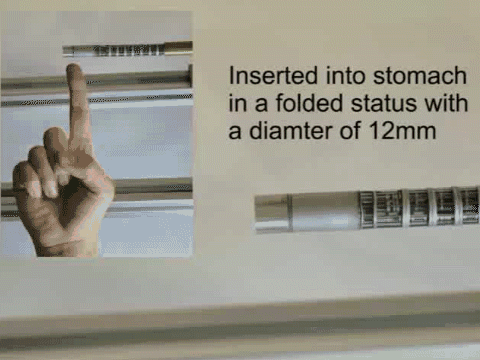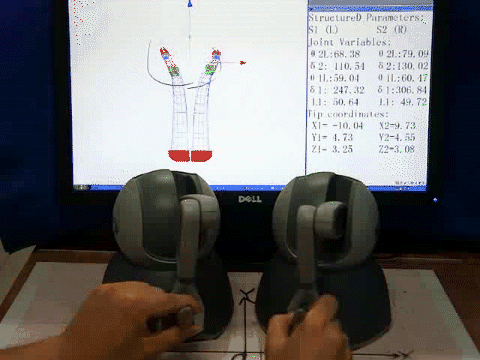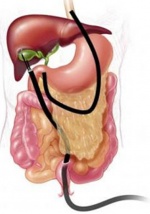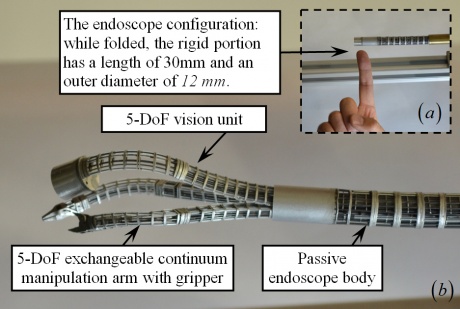From Rii
An Endoscopic Robotic Surgical System for NOTES
September 2010 to present
![]() This work was supported in part by the National Science Foundation of China and in part by the University of Michigan - Shanghai Jiao Tong University Collaborative Research Fund.
This work was supported in part by the National Science Foundation of China and in part by the University of Michigan - Shanghai Jiao Tong University Collaborative Research Fund.
Natural Orifice Translumenal Endoscopic Surgery (NOTES) is a newly developed surgical technique in which skin incisions or scars can be avoided. In NOTES, an endoscope was often inserted through a patient’s natural orifices (e.g. mouth, anus, vulva, urethra, etc.) then through an internal cut (e.g. in the esophagus, stomach, colon, vagina, bladder, etc.) to reach surgical sites for interventions. NOTES has recently attracted lots of attention, promising surgical procedures with fewer complications, better cosmesis, lower pains and faster recovery.
A robotic system for NOTES should be capable at least of doing the following:
- The device should be foldable to facilitate its insertion into stomach through pharynx and esophagus. Gastroscopes from Olympus® have outer diameters from 11.3mm (GIF-1TQ160) to 12.6mm (GIF-XTQ160). The presented design shall have a comparable or smaller diameter (currently 12mm).
- The device can deploy itself into a working configuration for suturing, knot tying, ablation, etc.
- Additional channels should be available for insufflation, manipulation tools for knot-tying, ablation, etc.
- The device can be positioned and oriented to achieve suturing and knot tying within the entire stomach. This can be achieved by placing the device at the distal tip of an endoscope.
- The device has a vision unit with integrated illumination.
- The device is actuated by its actuation unit located outside patient’s mouth.
To meet the challenges of NOTES, a continuum endoscopic surgical testbed shown in the figure was firstly developed for establishing benchmark characteristics of surgical robots for NOTES procedures. Design challenge of this testbed is centered at the outer diameter of its endoscope configuration (currently 12mm). A smaller diameter could lead to less invasiveness and less discomfort during the insertion. However, a smaller diameter brings more design challenges. It will be more difficult to integrate enough DoFs to ensure sufficient performance and dexterity. With more DoFs incorporated into a certain diameter, structures might have to be slimmer and fail to manipulate sufficient payload with adequate stiffness.
This testbed consists of one 5-DoF vision unit and two 5-DoF snake-like exchangeable continuum manipulation arms with grippers. The continuum manipulation arm can be replaced by sensor modules (e.g. an ultrasound probe) or energy sources (e.g. a cautery). The endoscopic tstbed can be inserted in its endoscopic configuration then unfold itself into a working configuration to perform NOTES operations. Deployment of this testbed is shown below. At this stage, the testbed is pure mechanical and all the motions were posed manually to verify its motion capabilities. However, suturing (tissue penetration and knot tying) capability is extremely important in the design of such a surgical robot and it's difficult to verify this capability through manual posing. An interactive simulation was then developed as shown below. Simulated continuum manipulators tied a single-throw square knot under the control of two Phantom Omni® devices.
| Depolyment of this Endoscopic Testbed | Knot Tying Simulation of this Endoscopic Testbed |

| 
|

